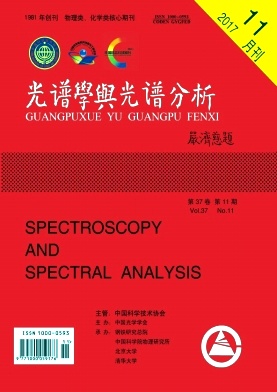以银纳米棒/氯化银为SERS基底用维多利亚蓝B分子探针检测大肠杆菌
[1] Niu P H, Zhang C, Wang J, et al. Biomedical and Environmental Sciences, 2014, 27(10): 770.
[2] Adetunji V O, Adedeji A O, Kwaga J. Asian Pacific Journal of Tropical Medicine, 2014, 7(1): S232.
[3] Bishop E J, Grabsch E A, Ballard S A, et al. Journal of Clinical Microbiology, 2006, 44(8): 2904.
[4] Bartosch S, Hartwig C, Spieck E, et al. Microbial Ecology, 2002, 43: 26.
[5] Cavaiuolo M, Paramithiotis S, Drosinos E H, et al. Analytical Methods, 2013, 5(18): 4622.
[6] Maheux A F, Boudreau D K, Bisson M A , et al. Applied & Environmental Microbiology, 2014, 80: 4074.
[7] Bishop E J, Grabsch E A, Ballard S A, et al. Grayson. Journal of Clinical Microbiology, 2006, 44(8): 2904.
[8] Cao X X, Li S H, Chen L C, et al. Nucleic Acids Research, 2009, 37(14): 4621.
[9] Gao A R, Zou N L, Dai P F, et al. Nano Letters, 2013, 13(9): 4123.
[10] Wang Y L, Lee K, Irudayaraj J. Journal of Physical Chemistry C, 2010, 114: 16122.
[11] Wu X M, Gao S M, Wang J S, et al. Analyst, 2012, 137: 4226.
[12] Fan W, Lee Y H, Pedireddy S, et al. Nanoscale, 2014, 6: 4843.
[13] Jiang Z L, Wen G Q, Luo Y H, et al. Scientific Reports, 2014, 4: 5323.
[14] Luo Y H, Wen G Q, Dong J C, et al. Sensors and Actuators B, 2014, 201: 336.
梁爱惠, 王耀辉, 欧阳辉祥, 温桂清, 张杏辉, 蒋治良. 以银纳米棒/氯化银为SERS基底用维多利亚蓝B分子探针检测大肠杆菌[J]. 光谱学与光谱分析, 2017, 37(11): 3446. LIANG Ai-hui, WANG Yao-hui, OUYANG Hui-xiang, WEN Gui-qing, ZHANG Xing-hui, JIANG Zhi-liang. Vitoria Blue B SERS Molecular Probe Detection of Escherichia coli in the Silver Nanorod/AgCl Sol Substrate[J]. Spectroscopy and Spectral Analysis, 2017, 37(11): 3446.




